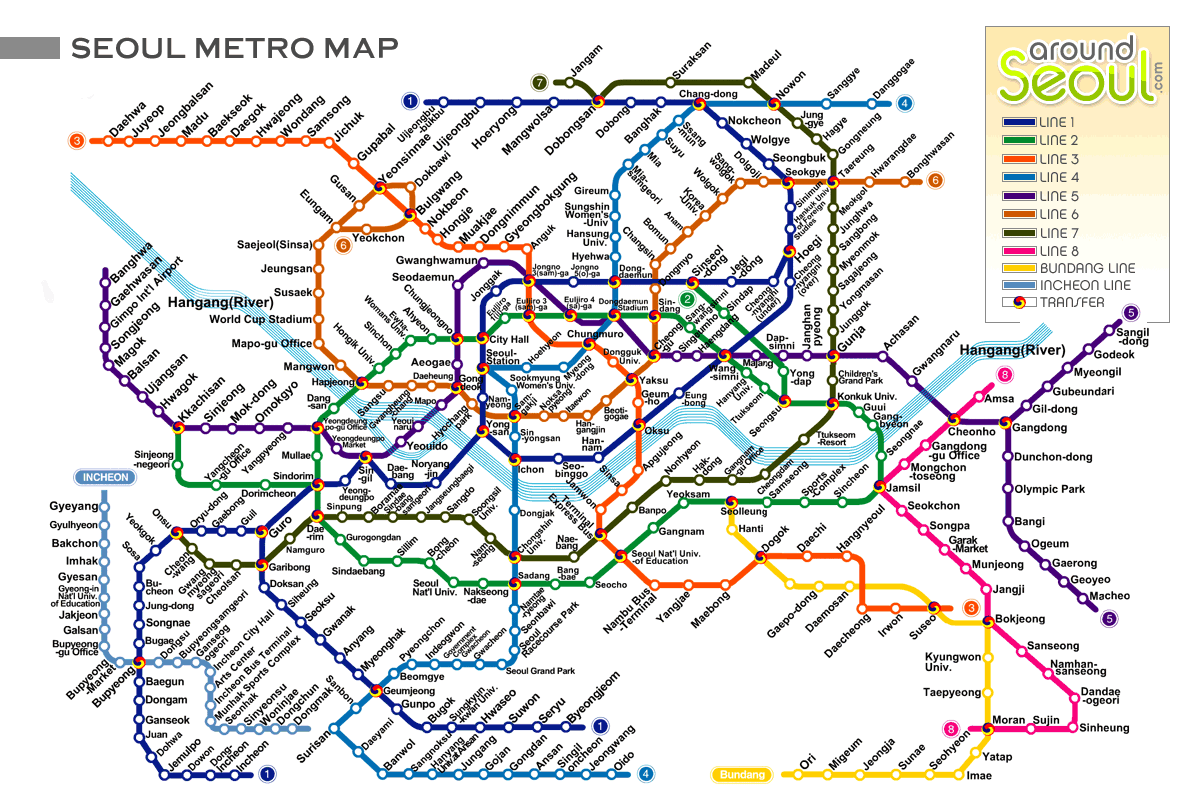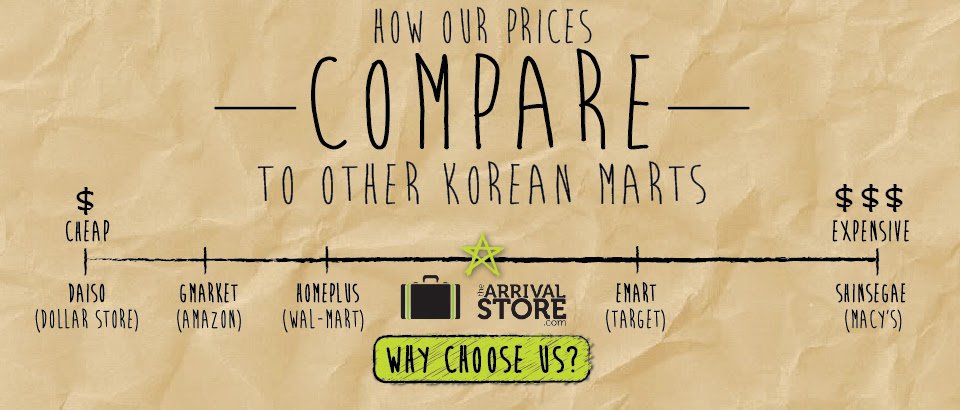By: Alicia Trawick
When you first arrive in Seoul, you are probably dying to get out there and see what the city has to offer. Fortunately, Seoul has one of the best public transportation systems on this side of the world. It’s quick, convenient and relatively inexpensive. You can get to virtually anywhere within city limits and outside city limits. But keep in mind, Seoul is a big place. Be sure to give yourself at least an hour of travel time.
If you are asking yourself “bus or subway?” I would recommend as a first timer in Seoul that you just hop on the subway. If you aren’t very familiar with the Korean language, riding the bus can be a bit confusing. So first things first; this is the latest map of the subway system:
Practicalities of using the subway:
If you are fortunate enough to have a smart phone when you arrive in Seoul you can download the subway application called ”Jihachul”. This application comes with subway maps in several different languages and includes maps of Seoul, Busan and Daegu. It gives you the option to click on your current location and your destination and shows you the fastest route and how much time it takes to arrive (including transfer time). I highly recommend this application, as it’s quite accurate and makes your life a lot easier.
If you’re like most people, however, you don’t have the luxury of a smart phone when you’ve first arrived in Korea. If this is the case I think a good rule to go by is to give yourself 40 minutes for every 6 to 8 stops you have to make and 5 to 10 minutes per transfer. Trains run very frequently, usually every 5 to 10 minutes but it’s always wise to give yourself extra time in case there is a delay.
Underground in every subway station you can buy a ticket to get onto the train at these machines:

You can buy one-time passes that are good for your current trip or you can get a T-Money card (which I believe is a must-have in Seoul). T-Money cards are re-loadable smart chip cards that are scanned to board busses and trains. In addition to being used for public transportation, a T-Money card can be used to purchase goods at most convenient stores and to pay for your fare in a cab. They are very useful and easy to reload. You can get a T-Money card and reload it at the underground machines and most local convenient stores. You can even reload your card at most stalls on the side of the street that sell newspapers and snacks. Trip prices for the subway vary depending on how far you’re traveling. But for most short trips the fare starts at 900₩ which is
about $1.00 (USD).
Popular Locations:
It’s helpful to note that Seoul is broken up by “gu” and “dong”. Gu (구) is district and Dong (동) is neighborhood. If a location sounds similar to another location it may be helpful to ask which gu it belongs to. For instance, two locations that are frequently mistakened for one another are Sinchon (신촌) and Sincheon (신천). Notice they are spelled differently but they sound very similar. One way to distinguish the two is to know that Sinchon (신촌) is located in Mapo-gu (마포구) and Sincheon (신천) is located in Songpa-gu (송파구). They are on opposite sides of Seoul.
Now that you have all the tools you need to ride the subway, where do you go? Here are some popular locations in Seoul:
Itaewon (이태원) Line 6: international community and food, popular foreign night scene, gay district
Noksapyeong (녹사평) Line 6: international community, HBC (Haebangchon- popular foreign residency)
Hongdae/Sinchon (홍대/신촌) Line 2: popular foreign night scene, art district
Jamsil/Sports Complex (잠실/종합운동장) Line 2: professional baseball stadium
Olympic Park (올림픽공원) Line 5: concerts, park
Samseong (삼성) Line 2: COEX shopping complex, aquarium, Megabox theater
Apgujeong/Sinsa (압구정/신사) Line 3: Seoul’s “Beverly Hills”, ritzy night clubs and shopping
Gangnam station (강남역) Line 2: business district, shopping
Myeongdong (명동) Line 4: largest brand name shopping district in Seoul, hostels
Dongdaemun (동대문) Line 5, 2 & 4: popular night market, shopping, exotic pet street, sports equipment
Insadong- Jongak Station (종각역) Line 1: traditional part of Seoul, Buddhist temples, vegetarian restaurants
If you run into a situation where taking a bus is more advantageous than taking the subway, (which happens quite often) there’s a handy app called ”Seoul Bus” that can be downloaded on your smart phones. Unfortunately the app is only in Korean so it may be difficult for you if you’re a newcomer. If you can navigate the app it is very useful. It gives up-to-date information about current bus situations and even how many minutes until the next bus arrives.
There are a few tips that can help you learn the system more effectively. The buses are color coordinated according to where they are going and/or which route they take.
Red Bus: goes out of Seoul to the satellite cities like Suwon or Ilsan
Blue Bus: usually cuts across town, so that you can save time that you would otherwise spend on the subway transferring two or three times (these routes are very useful)
Green Bus: typically follow the same route as most subway lines, so they are generally not as useful.
Yellow Bus: is not as common, but these are special buses that run around particular locations. For instance, the yellow bus near Namsan Tower has nine stops and all of them contain a different area of interest, like the National Theater of Korea and the Seoul Animation Center. Another yellow bus runs through and around downtown Seoul.
(small) Green Bus: this is a village bus which only runs a small route within a neighborhood or even just up and down a street to and from the subway station.






Leave A Comment